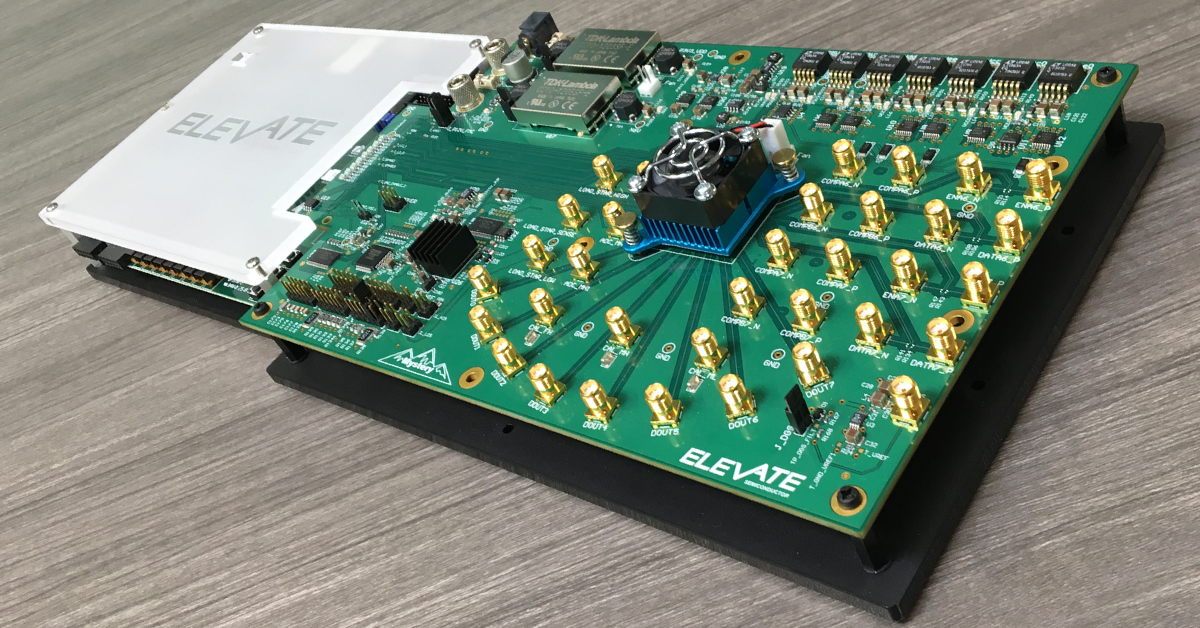Elevate Semiconductor offers a diverse array of products, and the Evaluation Module (EVM) plays a pivotal role in the assessment and testing of our devices and systems prior to their integration into ATE equipment. The EVM is primarily utilized to explore and understand the functionalities of our semiconductor products:
1. Setup and Configuration:
The EVM setup begins with configuring it to match the specific semiconductor device under evaluation. This involves connecting the EVM to the targeted semiconductor component, along with necessary peripherals like power and USB. For newer products like Ranier, Mystery, and Whitney, a “Zedboard” setup is used, while older products like Venus, Pluto, and Vesuvius utilize a “Triple Stack” setup.
2. Powering Up:
Upon powering the EVM, it energizes the semiconductor device, supplying it with the required voltage and current to mimic actual operating conditions. This process enables the monitoring of the elevate product’s power across various conditions, aiding in the design of an appropriate power supply.
3. Test Signal Generation:
The EVM applies diverse test signals to the semiconductor, encompassing input signals, clock signals, or specific stimuli for testing various functionalities. Additional equipment like different loads or a SMU (Source/Measure Unit) can be attached to better assess DPS (Device Power Supply) products.



4. Data Capture:
Advanced EVMs capture and record real-time data from the semiconductor, including output signals, response times, power consumption, and other performance metrics. An oscilloscope is recommended for examining the timing of PE (Pin Electronics) devices.
5. Debugging and Optimization:
Should any issues arise during evaluation, the EVM aids in debugging, providing insights into the semiconductor’s behavior. This information is crucial for refining design, optimizing performance, and resolving potential issues. Glitches, signal integrity, and power curves are thoroughly analyzed.
6. Verification and Validation:
The EVM is essential in verifying and validating semiconductor designs, ensuring that the device meets all required specifications and performs reliably under various conditions.
7. Documentation and Reporting:
Each EVM includes a guide to facilitate the product evaluation process, covering basics like power-up procedures, programming registers, and comes with scripts for basic setups.
8. Iterative Testing:
The evaluation process is iterative, with ongoing adjustments to the semiconductor design based on insights from EVM testing. This cycle repeats until optimal performance is achieved and the device is thoroughly understood.
In conclusion, the EVM serves as a comprehensive tool for testing and evaluating semiconductor devices, enabling engineers and designers to meticulously refine and optimize their designs before proceeding to production.


